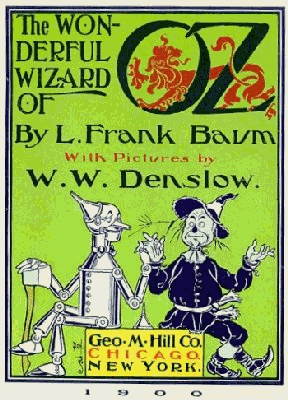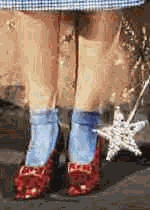The Wizard of Oz and the Free-Silver Debate
As a child, you probably saw the movie The Wizard of Oz, based on a children's book written in 1900. The movie and book tell the story of a young girl, Dorthy, who finds herself lost in a strange land far from home. You probably did not know, however, that the story is actually an allegory about U.S. monetary policy in the late nineteenth century.
From 1880 to 1896, the price level in the U.S. economy fell by 23 percent. Because this event was unanticipated, it led to a major redistribution of wealth. Most farmers in the western part of the country were debtors. Their creditors were the bankers in the east. When the price level fell, it caused the real value of these debts to rise, which enriched the banks at the expense of the farmers.
According to populist politician of the time, the solution to the farmers' problem was the free coinage of silver. During this period, the United States was operating with a gold standard. The quantity of gold determined the money supply and, thereby, the price level. The free-silver advocates wanted silver, as well as gold, to be used as money. If adopted, this proposal would have increased the money supply, pushed up the price level, and reduced the real burden of the farmers' debts.
The debate over silver was heated, and it was central to the politics of the 1890s. A common election slogan of the populists was "We Are Mortgaged. All But Our Votes." One prominent advocate of free silver was William Jennings Bryan, the Democratic nominee for president in 1896. He is remembered in part for a speech at the Democratic party's nominating convention in which he said, "You shall no press down upon the brow of labor this crown of thorns. You shall not crucify mankind upon a cross of gold." Rarely since then have politicians waxed so poetic about alternative approaches to monetary policy. Nonetheless, Bryan lost the election to Republican William McKinley, and the United States remain on the gold standard.
L. Frank Baum, the author of The Wizard of Oz, was a midwestern journalist. When he sat down to write a story for children, he made the characters represent protagonists in the major political battle of his time. Although modern commentators on the story differs somewhat in the interpretation they assign to each character, there is no doubt that the story highlights the debate over monetary policy. Here is how economic historian Hugh Rockoff, writing in the August 1990 issue of the Journal of Political Economy, interprets the story.
In the end of Baum's story, Dorothy does find her way home, but it is not by just following the yellow brick road. After a long perilous journey, she learns that the wizard is incapable of helping her or her friends. Instead, Dorothy finally discovers the magical power of her silver slippers. (When The Wizard of Oz was made into a movie in 1939, Dorothy's slippers were changed from sliver to ruby. apparently, the Hollywood filmmakers were not aware that they were telling a story about nineteenth-century monetary policy.)
Although the populists lost the debate over the free coinage of silver, they did eventually get the monetary expansion and inflation that they wanted. In 1898 prospectors discovered gold near the Klondike River in Alaska. Increased supplies of gold also arrived from the Canadian Yukon and the gold mines of South Africa. As a result, the money supply and the price level started to rise in the United States and other countries operating on the gold standard. Within 15 years, prices in the United States were back to the levels that had prevailed in the 1880s, and farmers were better able to handle their debts.


MGM used ruby slippers, but Frank Baum had sliver shoes to represent the Free Coinage of silver.
DOROTHY: Traditional American values
TOTO: Prohibitionist Party, also called Teetotalers
SCARECROW: Farmers
TIN WOODSMAN: Industrial workers
COWARDLY LION: William Jennings Bryan
MUNCHKINS: Citizens of the east
WICKED WITCH OF THE EAST: Grover Cleveland
WICKED WITCH OF THE WEST: William McKinley
WIZARD: Marcus Alonzo Hanna, chairman of the Republican party
OZ: Abbreviation for ounces of gold
YELLOW BRICK ROAD: Gold standard